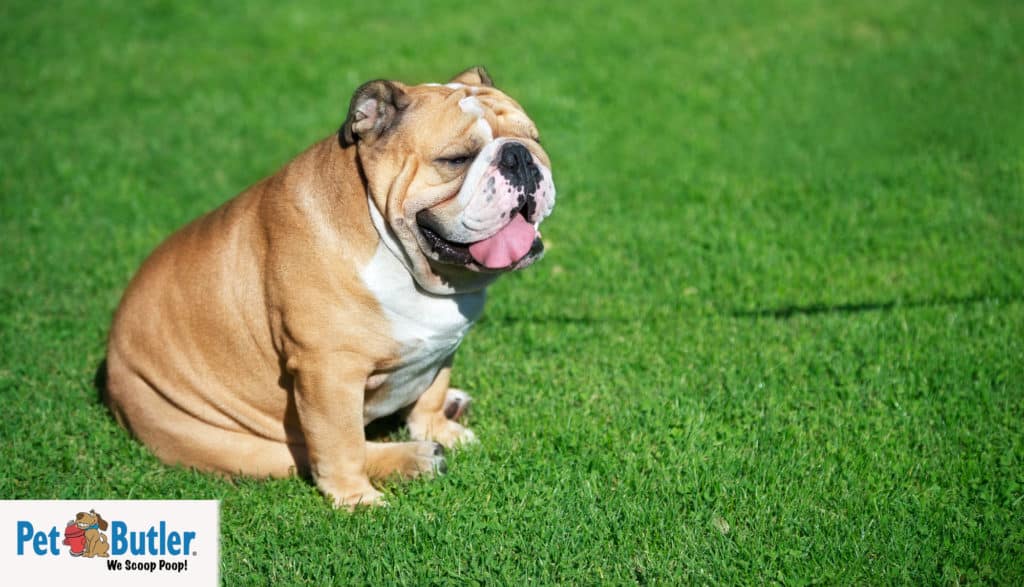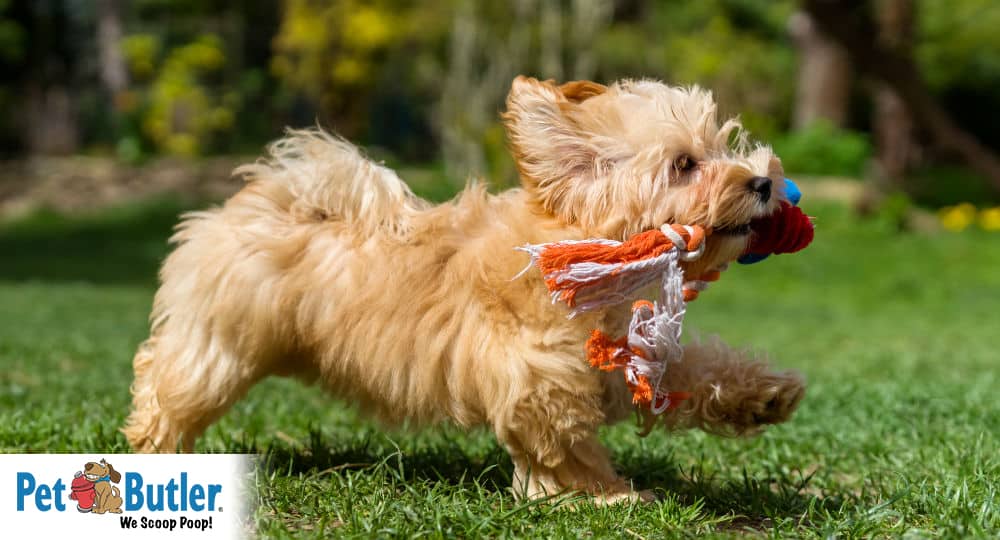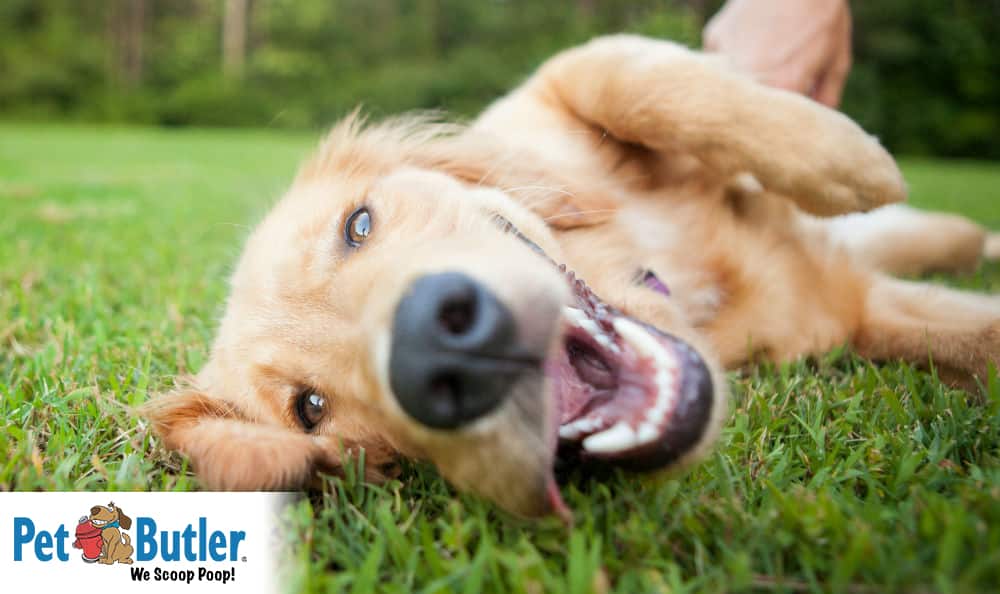Now that it’s 2018, we wearily rub the sleep out of eyes and take a tentative step back into reality. Our pants are a little more snug from the holidays and it’s time to get moving and regroup! After we purge the last bit of fruitcake and eggnog from the fridge, we owe it to our pets to take charge of their health and well-being. That starts with weight assessment and management, and it doesn’t have to be difficult. The trick is knowing where to start and being consistent. And the payoff is huge; a landmark study published in 2002 by Nestlé Purina’s showed that maintaining a dog’s lean body condition extended their median life span by 15 percent. For the Labrador Retrievers in the study, the statistic translates into two years.
What To Do If Your Dog Is Overweight
Placing a call to your veterinarian is the first thing you should do if you’re wondering if your dog is overweight. At the appointment, it helps to bring your pet’s food, treats, and measuring cup; taking it one step further, an accurate log of your pet’s food intake over a week or two is ideal. By having all family members write down what is fed, your vet gets an accurate picture of nutritional intake. Don’t stop there! Record any activity your dog has engaged in during that same time period. We aren’t necessarily counting calories expended, but gauging a rough level of activity. A pug on a couch doesn’t use the same amount of energy (calories) as a border collie who chases a frisbee 2 hours a day.
Your veterinarian is going to weigh your dog. You can monitor weight at home by weighing yourself, then weighing yourself holding your dog, and subtract your weight to get your pet’s LBS/pounds. Make a note of it on your food and activity log. If you have a large breed dog, many vet clinics and pet stores will happily let you walk in and get a weight on their oversized scale. Because of variability in breeds and body types within the breed, charts will list a healthy weight range for each breed. Taking a look at the AKC guide to breed weights, we see that a Boston Terrier may weigh anywhere from 12-25 pounds. That’s a HUGE degree of variability and isn’t particularly helpful, especially if you have a mixed breed dog. Veterinarians and knowledgeable pet owners are more likely to rely on a body condition scoring chart to assess weight.
Determine Your Dog’s Ideal Weight
One of the most popular is the Purina Dog Condition Scoring Chart. This chart allows pet owners and medical professionals to evaluate a dog based on three criteria and assign them a value from 1 (emaciated) to grossly obese (9): feeling the fat pad over the ribs and determining if the ribs are able to be easily visualized, evaluating a dog’s waist profile and thickness from above, and assessing their abdominal tuck. A dog at its ideal weight should be about a 4-5/9. Anything above or below, and you’ve got a problem! Each point on the scale correlates 10% over or under their ideal weight. For example, a golden retriever that is an 8/9, is roughly 30% overweight. Instead of weighing 100 pounds, he should weigh 70. (100 pounds x 0.30 = 30 pounds overweight). 4
Armed with your dog’s body condition score, food intake, activity level, diet fed, his rough weight in pounds vs. ideal weight, you can start to make some adjustments in how you feed and exercise your pet. It’s estimated that roughly 45% of dogs in the U.S. are overweight or obese. 2 These staggering numbers contribute to their overall quality of life in a number of ways: overweight pets are more likely to develop diabetes, arthritis, respiratory illnesses, skin infections, and cancer in addition to the relative immobility obesity fosters.
How Much Food To Feed Your Dog
Dogs are physiologically built to thrive on 2-4 small meals a day. Free choice feeding can lead to overeating when bored. The choice of what to feed can be a complex one. Again, enlist the help of your veterinarian who will likely recommend a food or foods based on your dog’s size, breed, health status (pre-screening for diseases like hypothyroidism, heart disease, Cushing’s disease, arthritis, and others to make sure there are no other medical issues contributing to your pet’s weight gain), activity level, and age. Just reducing your dog’s caloric intake of his regular diet and treats could also deprive him of essential nutrients. In general, a diet higher in protein and lower in fat and calories per 8 ounce cup can help your pet achieve 1-2% loss in pounds per week. Canned foods, though more expensive, tend to be more filling and also contain a higher percentage of protein as fed.
Dog Food Advisor has a handy calculator that can aid you in determining the amount of calories to feed. Be careful; the labels on the back of dog food bags and cans are the estimated amounts to feed a dog at their healthy weight. We are looking to lose! Also, recall that treats count. Ice cubes, carrots, apple slices and green beans can be an appealing substitute to high calorie bones and chews. BalanceIT is a company that will develop a home cooked recipe and supplements exclusively for your dog to meet their individual needs. Started by a board-certified veterinary nutritionist, professional recommendations can aid even a finicky dog or one with food allergies to lose weight.
Exercises and Activities For Dogs
If your dog is cleared to resume exercising, start with a 5-10 minute walk several times a day. If you are able, incorporate some hills and swimming which help to build muscle and increase your dog’s metabolism. When the weather is chilly, play “find the kibble” in the house after hiding individual pieces under rugs, on chair rungs, and in plastic water bottles or boxes. The mental stimulation is a good replacement for physical exercise on cold days, and the dogs don’t realize they are expending as many calories as they are eating! Keeping a weight loss and activity log can assist in tracking the weekly weigh-in and fine tuning your dog’s program to achieve optimal results. Measure, measure, measure (even keep a baggie of food for your dog’s daily ration if needed). Who knows, you may find that by increasing your awareness of calories in, calories out, you may reach your own weight loss goals!




